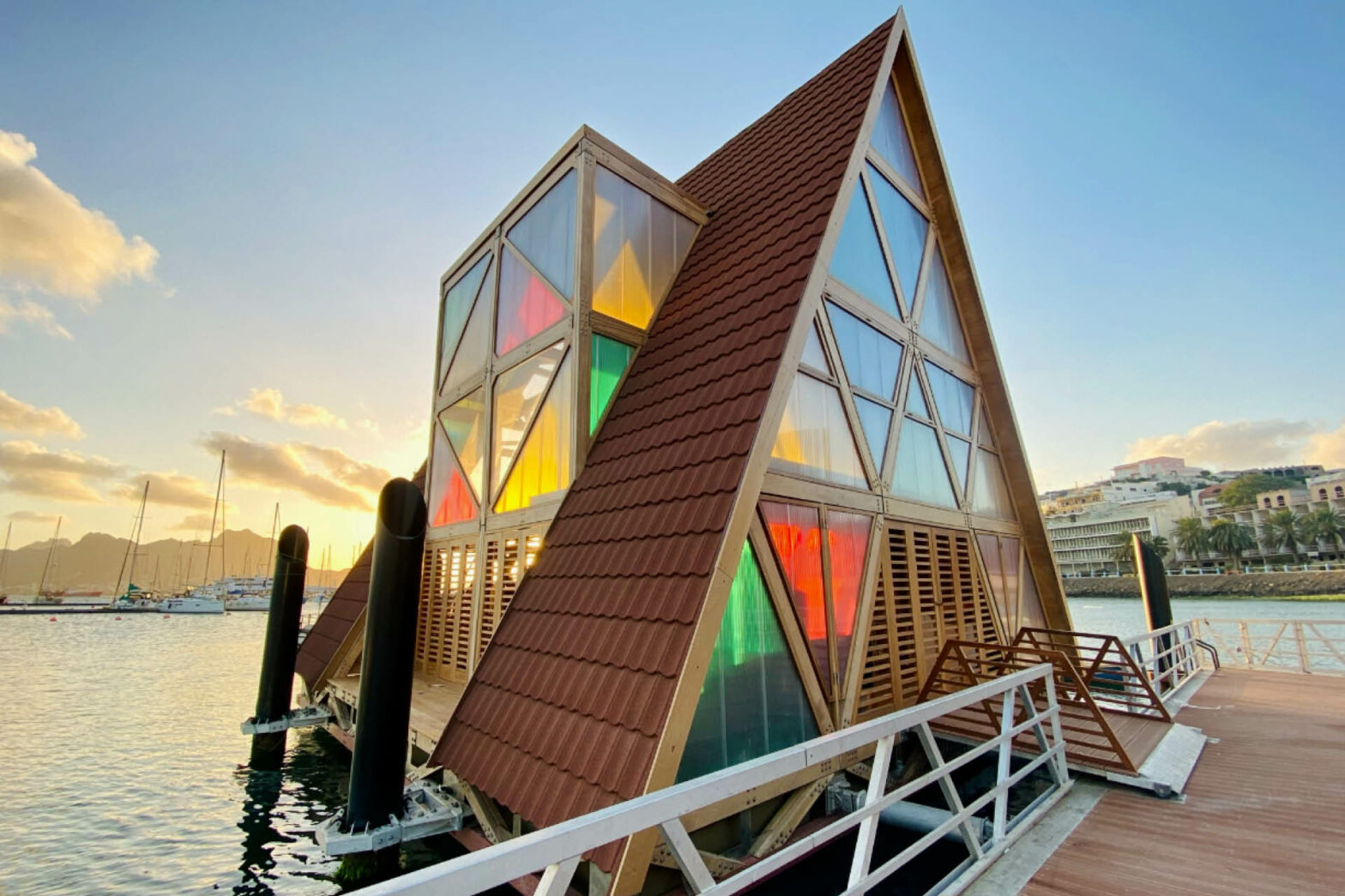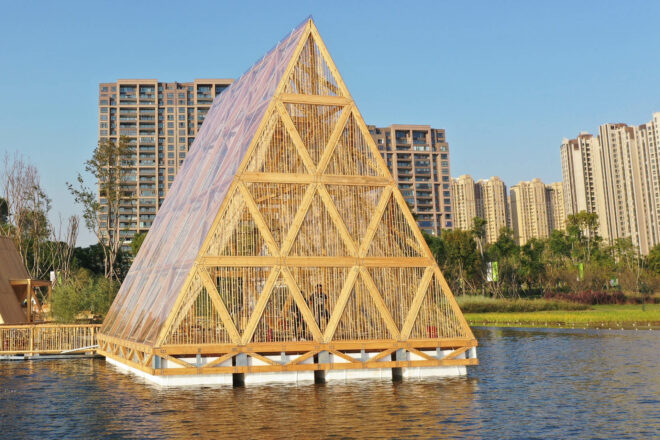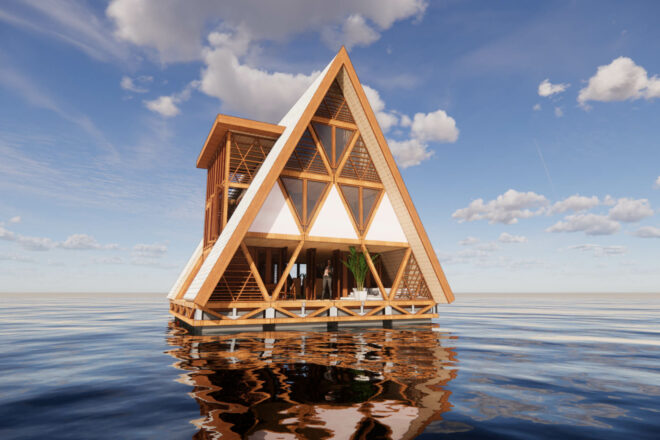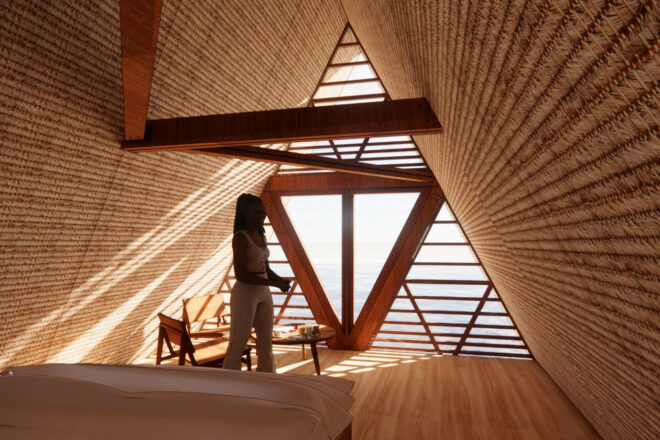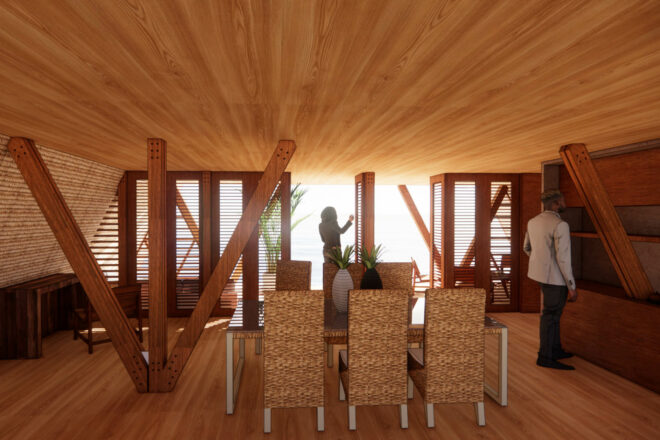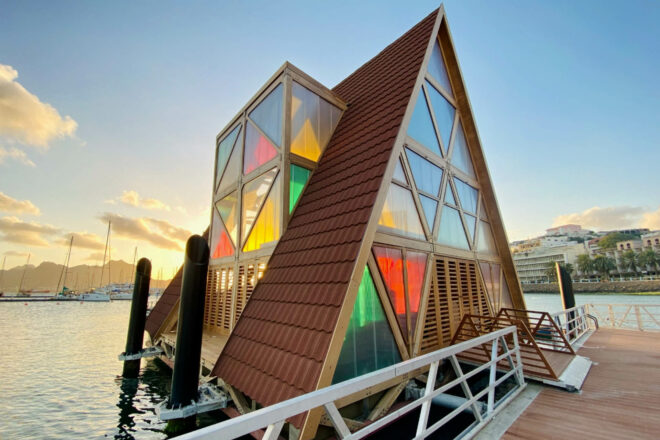MFS™ – Medium is a product for (self)building 220m2 of real estate on water, by hand.
Makoko Floating System (MFS™) is a simple way for people to build on water by hand. It is a prefabricated, modular, floating, timber structure that can be assembled manually for developments on water in different regions.The iconic triangular shaped structure is ideal for flotation due to its low center of gravity and the rigid A-frame that gives it stability and balance – making MFS one of the few and exceptional three floor floating buildings existing in the world.
MFS is modular, scalable and available in 3 sizes – small, medium and large vessels. The three sizes range from 1 to 3floors respectively and are available in different internal floor configurations to create floating cottages, lofts or large performance spaces. MFS provides an alternative approach to development through the use of lightweight structures that live on water. Constructed from local, renewable materials mainly wood or bamboo, steel connections and floaters, MFS isa low-tech structural frame that can be fitted with relevant hi-tech equipment. MFS provides inclusive employment for local residents, through low skill labour with simple hand tools, as well as a building block for city visionaries of emerging opportunities.
MFS wood and steel components can be produced using locally sourced and renewable timber available in typical saw mills. The prefabricated large size vessel, for instance, can be assembled in about 10 days with 5 basic skilled people using simple tools and equipment. The medium and small size vessels can can be assembled in 8 and 5 days respectively.The structure can be clad with different lightweight materials to adapt to the local environmental, material, cost and aesthetic cultures. And to provide different variations of enclosures for different climates. Like ships, MFS vessels can be anchored to piles, jetties, banks or moored with anchor chains and weights
MFS can be fully integrated with appropriate sustainable living technologies for energy, waste and water management such as solar panels and batteries, composting toilets, water harvesting and clean water recycling systems allowing it to be self-sufficient and function off grid.Alternatively, the system can be directly connected to the infrastructure mains via the jetty using conventional pipes and ducts.
